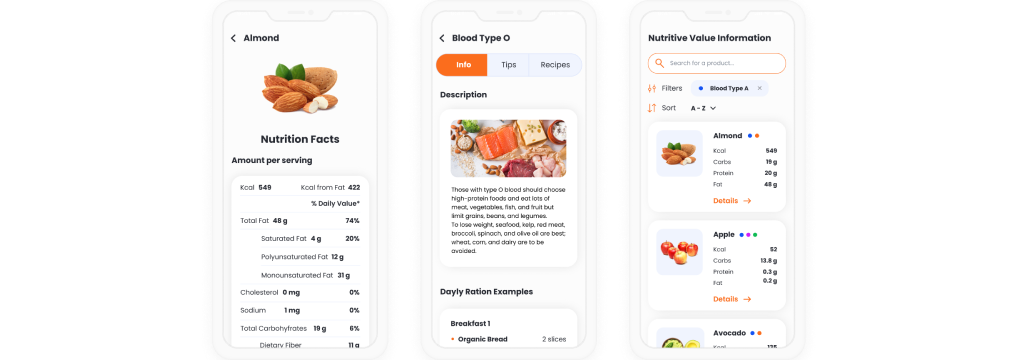Custom Wellness Applications
Key Aspects
In healthcare software development since 2005, ScienceSoft designs and builds custom wellness applications with high user engagement rates.
Wellness Apps: the Essence
Designed for mobile platforms, wellness applications promote a healthy lifestyle and vary from specialized fitness apps that enable activity tracking, physical and mental exercises, or nutrition management to general wellness monitoring solutions. Using engagement techniques, wellness apps help users adopt healthy behaviors and monitor their physical, psychological, and behavioral state.
Custom wellness apps can provide AI-based personalization of recommendations (on meals, workouts, education materials), top-tier gamification techniques for user retention, and multilingual user support. Plus, custom apps can be easily integrated with multiple smart devices, like smartwatches by different brands, smart scales, and more.
Core Features of Wellness Apps
Health state tracking
- Automated (using connected wearables) and manual health and activity log (e.g., number of steps, heart rate during a workout, body mass index, jogging speed).
- Nutrition log featuring meals’ calories; protein, fat, carbs consumption, etc. (users can either enter the parameters manually or choose a meal from the list in the app).
- Mental health and mood journaling (for coping with stress, etc.).
- Tracking periods, ovulation, and pregnancy.
- Sleep cycle tracking.
- User profile with key health information (e.g., age, height, weight).
Analytics
- Daily logs analytics and alerting about positive or negative lifestyle changes (e.g., lack of physical activity, dehydration).
- Suggestions for adjusting daily habits based on daily logs analysis.
- Personalized dashboards with daily activity, nutrition, hydration, etc.
Self-care sessions
- Pre-recorded and real-time coaching talks and mindset courses suggested by an app based on the available user information and in-app activity (e.g., stress management).
- Meditation sessions.
- Workouts, yoga, and stretching exercises.
- Breathing exercises.
- Relaxing music and stories (to reduce stress and improve sleep).
- AI-customized diet plans (based on a user’s body mass index, weight goals, workout plan, etc.).
Communication with experts and other users
- Public chats for app users (e.g., for sharing self-motivation tricks, getting emotional support).
- One-on-one or group consultations with experts (e.g., coaches, nutritionists) to discuss users’ progress.
- Information and notifications on a user’s friends’ sports activity and workout results, peer support.
User engagement
- Goal setting (e.g., for the number of steps walked per day, protein consumption).
- Competition challenges and marathons for app users (e.g., weight loss challenge, yoga challenge) split into daily tasks (complete a workout session with an instructor, run 2 miles, etc.).
- Challenge milestones tracking.
- Achievement badges or rewards (e.g., points that can be exchanged for exclusive healthy lifestyle content).
- Achievements sharing on social media.
- Reminders to perform a planned activity (e.g., go for a run, drink a glass of water).
Wellness education
- Articles or Q&As on health and wellness (e.g., about breathing techniques for a mental health app).
- Chatbots (e.g., sharing advice on diet improvement).
- Health quizzes.
- Information on nearby healthcare and sports organizations.
Security
- Multi-factor authentication.
- User consent on data processing.
- Data encryption of user’s personal data to comply with data protection regulations (e.g., GDPR).
- User data backup.
Billing and payment management
- Secure payment gateways (for premium functionality purchase, etc.) to accept payments through different channels (a card, bank transfers, Apple Pay / Google Pay, etc.).
- Automation of sales tax handling and user invoicing.
- Payment failure handling.
How to Develop a Wellness App
|
1. Analyzing the wellness app market, deciding on the app goals (e.g., filling a market niche, promoting wellness services). 2. Designing a product concept, feature set, and integrations with smartwatches, fitness trackers, etc. 3. Wellness app requirements engineering, tech stack selection, architecture design, and monetization approach. 4. If the app is subject to HIPAA, GDPR, FDA, MDR, or MOHAP requirements: creating a compliance roadmap and following it throughout the project (e.g., documenting all the project steps, submitting the app to the authorities for clearance). |
5. Project planning: time frame, KPIs, budget, key milestones. 6. Designing UI and UX with a focus on accessibility and usability, conducting multi-round UX testing. 7. Developing and testing the wellness app with further release to the chosen mobile store(s). 8. Handling user requests and resolving the arising technical issues. 9. Maintaining the app: performance monitoring, optimization, security code reviews, etc. 10. Rolling out new app features (including AI/ML features) and developing new integrations with other apps and smart devices. |
Success Story by ScienceSoft

Customer
A Swiss startup that offers apps promoting a healthy lifestyle, physical and mental wellbeing.
Project scope
A set of engaging mobile apps (for iOS and Android) allowing its users to get complete nutrition data for hundreds of foods and assemble a diet plan depending on their blood type.
Project details
The apps provide users with:
- Nutritive value information (including calories, protein, carbs, fat, cholesterol, sodium, and Glycemic Index).
- Recommendations on a suitable diet depending on a patient’s blood type.
- List of color-coded foods (based on their compatibility with the patient’s blood type).
Project highlights
Information availability without access to the internet.

 Schedule a call
Schedule a call

 Schedule a call
Schedule a call